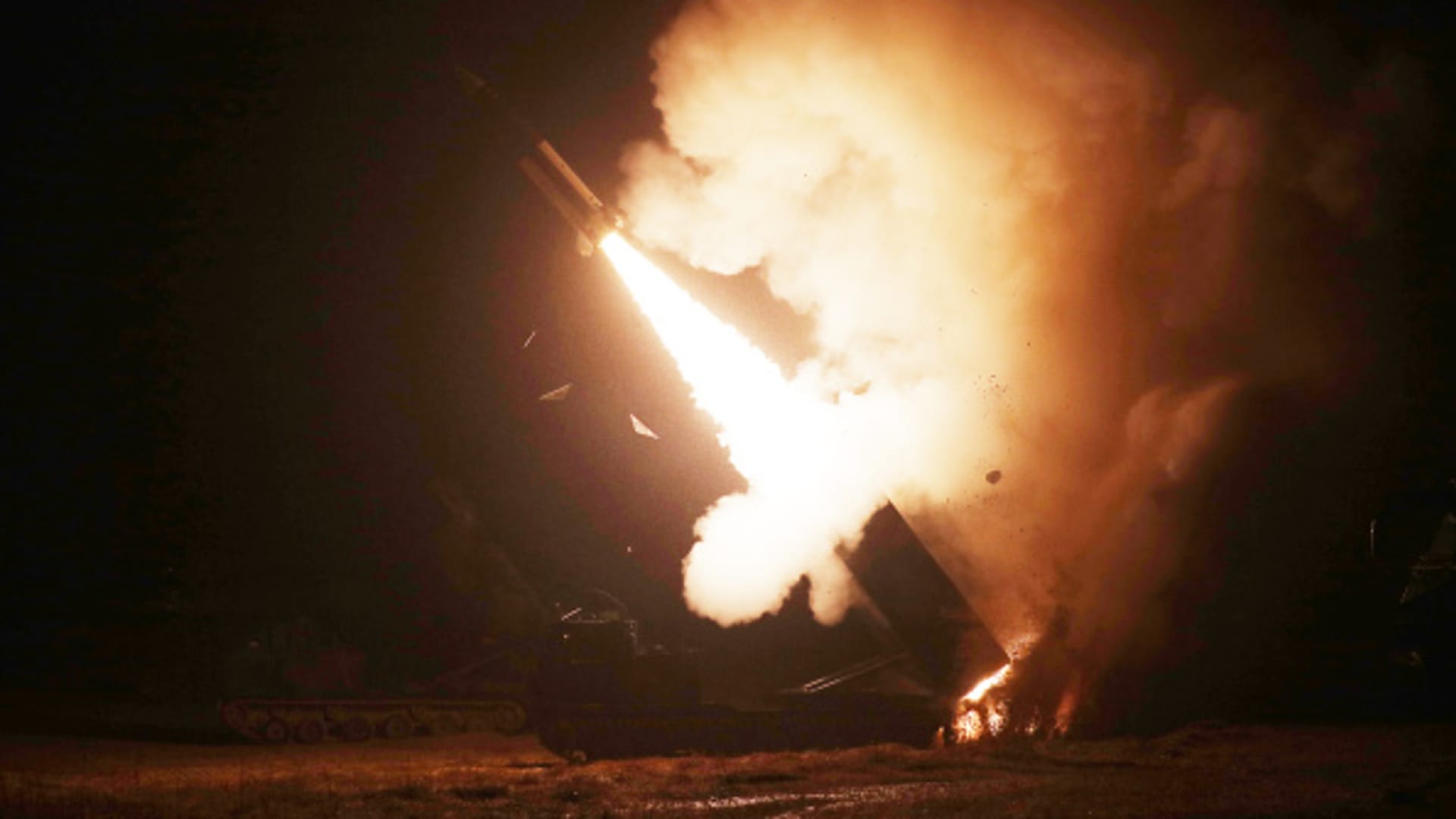
Moscow signaled to the West that it’s ready for a nuclear confrontation after Ukraine was given permission to attack Russian territory â and appeared to quickly act on that greenlight â using U.S.-made long-range missiles.
Kyiv appeared to waste little time after reportedly being given the go-ahead by Washington Sunday to use U.S.-made ATACMS missiles against specific targets. Ukrainian news outlets reported early Tuesday that the missiles had been used to attack a Russian military facility in the Bryansk border region.
Russia then confirmed the attack, with the Ministry of Defense confirming that Ukrainian forces had “struck a facility in [the] Bryansk region” using six ballistic, American-made ATACMS missiles. The ministry claimed air defense missile systems had shot down five of the missiles, and damaged another.
“Its fragments fell on the technical territory of a military facility in the Bryansk region, causing a fire that was quickly extinguished. There were no casualties or damage,” the ministry said.
CNBC was unable to independently verify the reports and Ukraine’s leadership has not commented on the attack.
The Kyiv Post news outlet cited a national security official as confirming the strike in Bryansk had been carried out, although he did not indicate which weapons had been used.
The Kremlin has repeatedly warned the West against allowing Ukraine to use its long-range weapons to attack Russia directly. On Tuesday, Moscow upped the ante as Russian President Vladimir Putin signed a decree approving its updated nuclear doctrine that shifts the parameters on when Russia can use nuclear weapons.

The updated document, outlining the conditions in which Russia can use nuclear weapons, now states that any aggression against Russia by a non-nuclear state, if it’s supported by a nuclear power, will be considered as a joint attack.
The doctrine also stated that Russia may use nuclear weapons in the event of a critical threat to its sovereignty and territorial integrity (and that of its ally, Belarus) and the launch of ballistic missiles against Russia would be seen among the conditions that could warrant a response using nuclear weapons.
The Kremlin’s Press Secretary Dmitry Peskov was asked on Tuesday whether Russia would consider the use of American non-nuclear missiles by the Ukrainian military as an attack by a non-nuclear state with the support of a nuclear state.
â”You will be able to read the paragraphs yourself, but in general it also states that the Russian Federation reserves the right to use nuclear weapons in the event of aggression with the use of conventional weapons against it or the Republic of Belarus, which creates a critical threat to sovereignty or territorial integrity,” Peskov told reporters.
“Aggression against the Russian Federation by any non-nuclear state with the participation or support of a nuclear state is considered a joint attack.”
The Kremlin’s comments come a day after Russia’s state-run Civil Defense and Emergencies research institute, a part of Russia’s Emergencies Ministry, said mobile bomb shelters that it had developed had gone into mass production for the first time in history.
The shelters, called “KUB-M” units, look like shipping containers and provide 48-hour protection for people from various threats, including “natural disasters and man-made accidents,” including the “air shock wave and light radiation of a nuclear explosion,” penetrating radiation and radioactive contamination of an area, the institute said Monday.
The units can also protect from hazardous chemicals, fires and conventional weapons, the research institute said, adding that the key advantage of its KUB-M units was their mobility. Each container can shelter 54 people, it added, with additional capacity possible if more modules were fitted.

The institute did not link its announcement to developments regarding the ATACMS missiles, or the approval of Russia’s updated nuclear doctrine, but the timing of the announcement was not seen to be coincidental, acting as another warning to the West that Russia is serious when it warns of a possible nuclear confrontation, and is actively preparing for the possibility, despite repeatedly stating that it does not want a nuclear war with its adversaries.
Heightened tensions between Russia and Ukraine, and its allies in the West, come as Russian forces are seen to be making considerable gains in eastern Ukraine, appearing to look to seize as much territory as possible before President-Elect Donald Trump takes office in January.
It’s widely expected that Trump will push Moscow and Kyiv into peace talks that will be favorable to Russia, forcing Ukraine to concede occupied land to its neighbor as a price for peace, with Trump signaling U.S. military aid for Ukraine will end.

